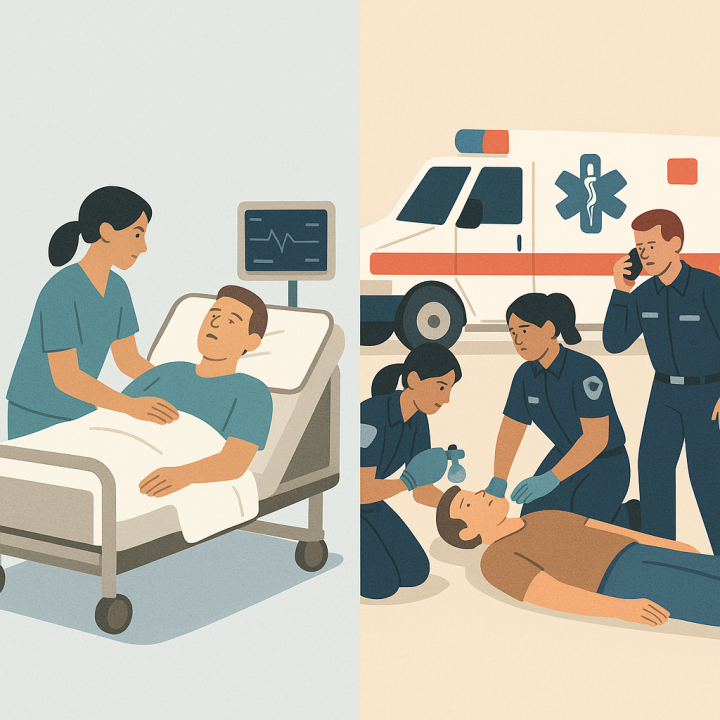In healthcare education, simulation labs (sim labs) are a cornerstone for training students and professionals. They provide a safe, controlled environment to learn, practice, and refine critical skills. But no matter how advanced the simulation, it’s not the same as facing a real-life emergency. So what are the differences—and why do both matter?
1. Controlled vs. Unpredictable
Sim Lab: Every scenario in a sim lab is designed with learning objectives in mind. Instructors can pause the action, offer guidance, or reset the scene. Students know they’re in a learning space, which allows for trial and error without real-world consequences.
Real Emergency: Emergencies in the real world are fast-paced, chaotic, and unpredictable. There’s no pause button, and the pressure to act correctly the first time is immense. The stakes are real—patients’ lives depend on your actions.
2. Emotional Intensity
Sim Lab: Even high-fidelity manikins can’t replicate the emotional intensity of a real patient in distress—or the reaction of their loved ones. While simulations aim to mimic stress, students know deep down it’s not real.
Real Emergency: The emotional stakes are much higher. Fear, anxiety, adrenaline, and even grief all come into play. Managing your own emotional response becomes part of the challenge.
3. Team Dynamics and Communication
Sim Lab: Teams are often made up of fellow students or coworkers practicing known roles. Debriefing follows every exercise to reinforce communication and leadership strategies.
Real Emergency: Team members may not know each other. Roles can shift on the fly. Communication must be clear, direct, and efficient—without the benefit of do-overs.
4. Resources and Distractions
Sim Lab: Equipment usually works. The environment is predictable. Distractions are minimized to focus on learning goals.
Real Emergency: Equipment might fail. Patients may have complex needs. Family members, noise, time pressure, and environmental hazards create a messy, imperfect world that must still be navigated.
5. Learning vs. Performing
Sim Lab: The focus is on learning, with room to experiment and grow. Mistakes are expected—and valuable.
Real Emergency: The expectation is to perform. You rely on your training, instinct, and experience. Mistakes can have serious consequences.
Why Both Matter
Sim labs build competence and confidence. They offer repetition, structured feedback, and a safe space to make mistakes. But real emergencies build resilience, adaptability, and the emotional strength that only experience can teach.
The best clinicians are shaped by both. Simulation gives you the tools—real emergencies show you how to use them under pressure.


